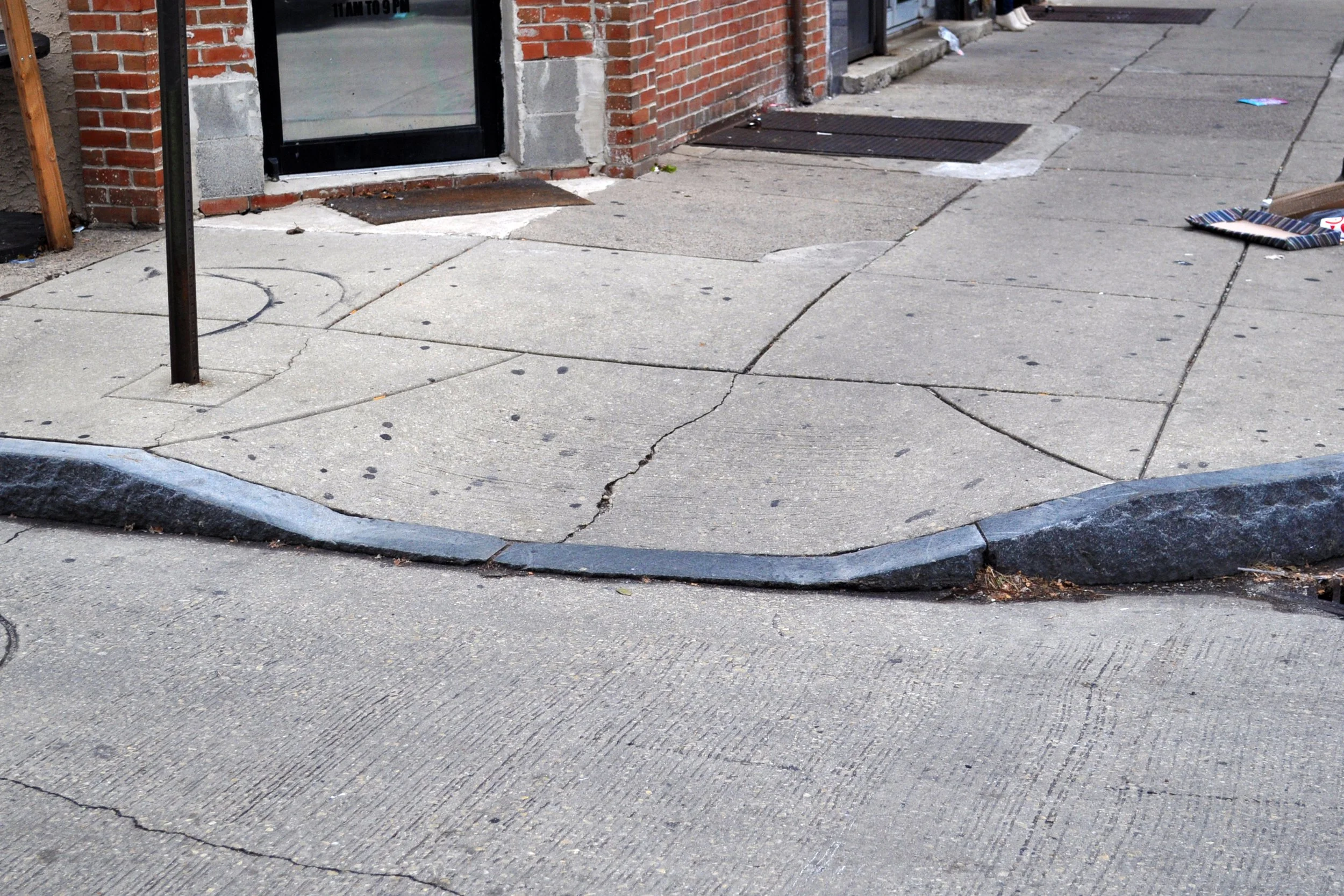Assistant Rector’s October Note: The Curb-Cut Effect
Do you know about the curb-cut effect? Even if you don’t know this term, I’m sure you know what a curb cut is.
When you’re on the sidewalk and come to a crosswalk, the sidewalk slopes down a little through the curb to come to the level of the road. This way you can cross the street without stepping up or down a curb.
Until recently I was a pedestrian 24/7, and here are some people who purposefully walk to the curb cut: people pushing strollers; workers rolling heavy carts; people with casts and/or using crutches; people slightly unstable on their feet, because of age or any reason; people with rolling suitcases; people carrying something heavy or bulky, like furniture or packages. And of course: people using wheelchairs!
The curb-cut effect is when something that was designed and/or implemented for disabled people improves access and use by everyone. The curb cut was designed and implemented with wheelchair-users in mind, but it has come to be used and appreciated by so many. If we got rid of it, many people would notice.
In our Strategy brainstorming events recently, many of the flower petals contained ideas about our nave and our worship together.
Right now, people are squeezed in different ways in the nave. Young children are not quite comfortable in the pews, which are the wrong height for their bodies. We are experimenting with the True Vine Table, but using this space means that there is no longer a convenient spot to leave walkers or canes. The Soft Space (for ages 0-5) is great, but it is not quite enough room for children and adults to maneuver together. We dearly love the piano and the chamber organ, but their presence crowds the front of the Epistle side and makes people tentative about walking in that corner. The Choir and any guest musicians need to be able to see their Director, but going up and down stairs is a challenge, and there isn’t a lot of room. We love our low and wide altar, where many people of many ages can stand and offer the Great Thanksgiving—but it makes moving around the chancel a challenge for clergy, acolytes, servers, and choir.
What if the problem isn’t the different groups of people and our needs, but the space itself?
How might the space itself better serve all of us?
How might changing the space for one group—like wheelchair-users or small children—improve the space for everyone?
As we move into this next season of strategic dreaming and planning, I hope you will join me in approaching our daydreams looking for the curb-cut effect. Instead of pitting groups against each other, even in our imagination—instead of thinking in stereotypes or assumptions—let’s look for ways we might each enjoy something new. Let’s look for ways a change that we make “for” another group might positively affect our own experience.
We can ask God to help us imagine with equal parts daring and practicality! Here’s a good prayer for this season, from our Book of Common Prayer.
57. For Guidance
Direct us, O Lord, in all our doings with thy most gracious
favor, and further us with thy continual help; that in all our
works begun, continued, and ended in thee, we may glorify
thy holy Name, and finally, by thy mercy, obtain everlasting
life; through Jesus Christ our Lord. Amen.
